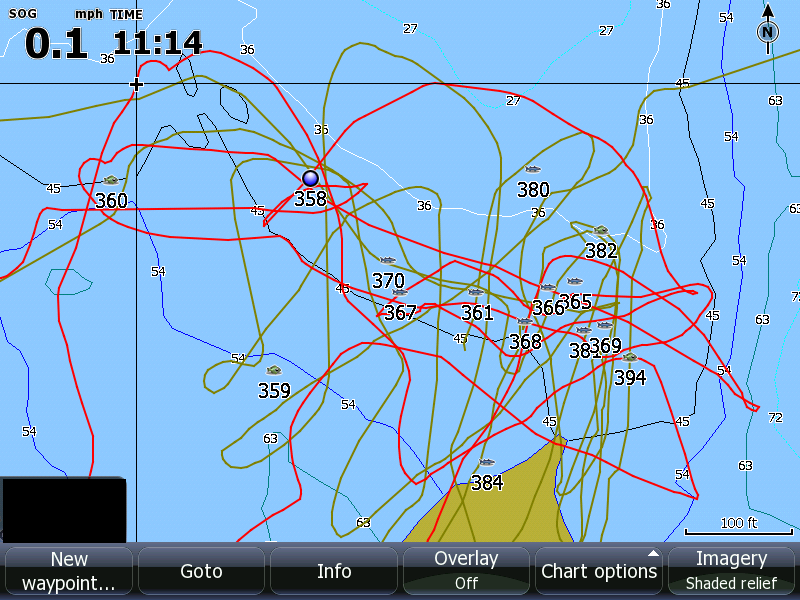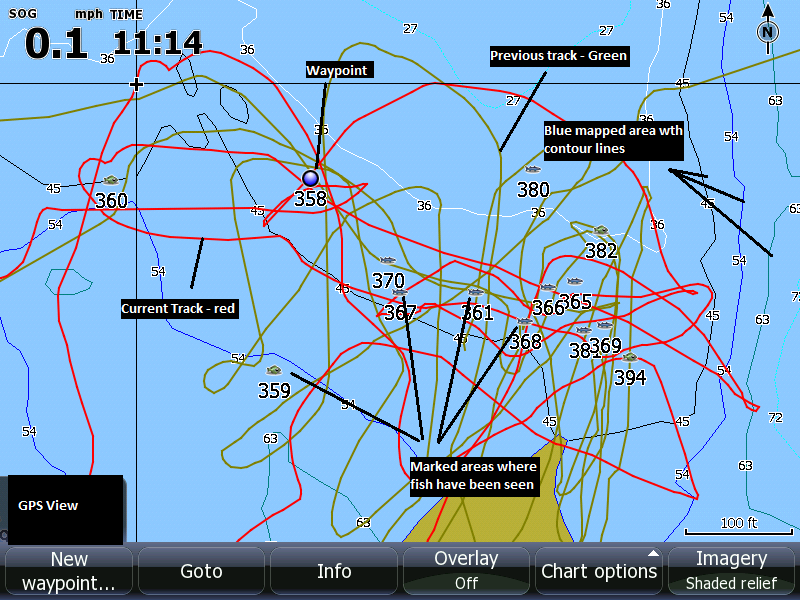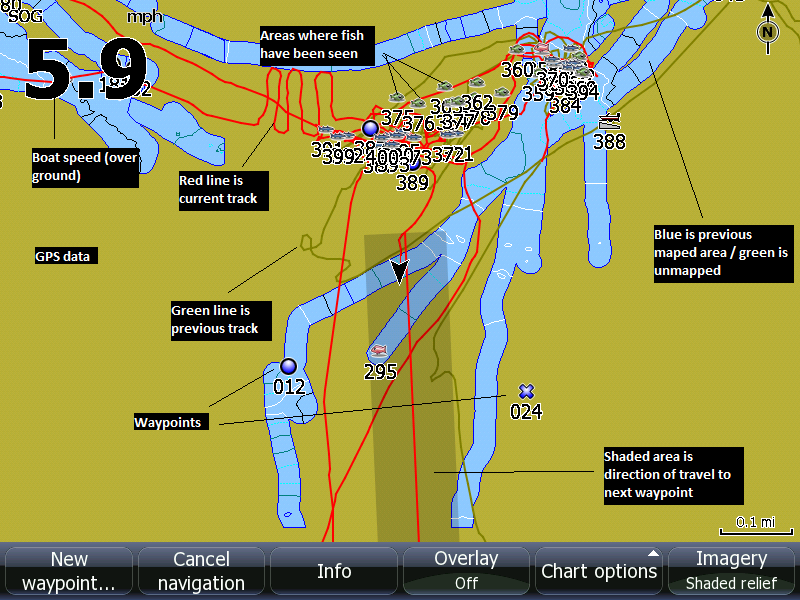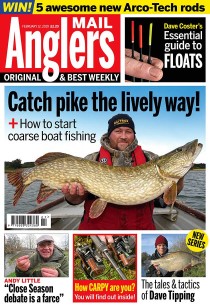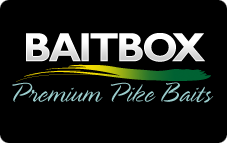Deciphering Fish Finders – Part 2
A lot of anglers make the mistake that because they have the ability to use side imaging or down scanning that’s what they always use, but in some situations it is far more effective to use the echo sounder display and the GPS rarely gets used. In this part we will look at why it is important to also use GPS alongside side imaging and down scanning. So let’s look at the GPS features of a combined unit.
At first glance the GPS view above looks like a mess that a child has drawn on the side of a the fridge freezer, but with a bit of interpretation you begin to appreciate how powerful this tool is in fishing. Track lines, all the little squiggles you can see are the area the boat has been (possibly fished before) they are all messy and not straight because I was looking for fish while they were recorded, and occasional stopping and drifting. Had I been moving between spots or trolling they would be nice and uniform. But why do you need to know where the boat has been? Well if you are drifting or trolling it would be a bit silly to keep going along the same track and covering the same water, (unless you have caught fish from a spot which you would, hopefully, have marked anyway).
The green track is from a previous day, I kept it on just so I could see the area I had fished previously. The red track is the current track that the boat is making. As you will notice along these tracks there are some icons, the ones that are shaped like a fish are where I have seen a fish on the bottom. Why bother to mark them? Well, often with pike, if you see them in an area they can often be back there on another day, they are quite predictable like that on some waters. There are some other icons on that map, these I have marked for other reasons such as features or fish caught. These icons are effectively like having lots of little marker floats out in the water that will stay there indefinitely, and we all know how important it can be to fish to marker floats. The major advantage with GPS is that these “marker floats” are invisible to anyone else, so they don’t get fished to or moved around!
The GPS view shown is projected over a previously mapped area. Maps can be created using programs such as Dr Depth or Reef Master, you can even send off your track data (which shows depth and GPS data) to the likes of Lowrance who will produce one for you. I find the contour lines very useful when looking for gradients to fish on, especially on big waters, where if you find fish on one gradient, then you can be sure that you will find others on similar gradients.
The GPS plot below shows some areas that have been mapped and some that haven’t. The blue areas are mapped (Well, have been processed on my computer) the green areas are spots that I haven’t yet done. Again the red line is the current track, and as you can see in the upper left of the image there is an area that I have been mapping – these stick out as a series of “s” curves. It can take time mapping a large water so I tend to do a little bit at a time, usually when I’m bored and not catching, or when I’m looking for fish on the bottom.
Also on this GPS plot there are a couple of waypoints marked, you can navigate to these waypoints, which is what I am doing with the big shaded line in the middle of the image. You can of course make your own heading there, but it is much more efficient to follow the guidelines projected on the chart.
The speed over ground is an important factor in fishing from a moving boat, as there are certain speeds that are more effective for certain species and methods. For example, if I was vertical jigging for zander I wouldn’t want to be going less than 0.3 mph or more the 0.9 mph. If I was trolling for pike I’d look to be going between 1.1 and 1.9 mph with most soft plastics, and up to 2.5 mph with crankbaits. When searching for fish using the echo sounder and side imager I find a speed of around 3 mph about right.
In the final part of these series we will look at the often overlooked standard echo sounder view, which in fact is one of the most useful screens you can use.

